|
What's this thing about the hips holding emotion? I know, it's all very woo woo. I wrote about it in my March newsletter (you should be signing up for my newsletter) and in it, I dropped some science like Galileo dropped the orange (Beastie Boys, 1989). It goes like this. The hips are the physical and energetic gateway of the body. Muscles in the hips, specifically the iliopsoas muscles, are triggered during the "fight or flight" mechanism in response to stress. When the mind senses danger, the brain releases chemicals that prepare the body to defend itself from attack. Our bodies regularly kick into this mode by non-life threatening events, like worrying about work, getting startled by a barking dog, or forgetting to send in the school permission slip. The hips contract in preparation, and yogis believe the emotion connected to that stressful event gets trapped in the body in those chronically contracted muscles. (To read more about the psoas and the nervous system, click here.) So onward we continue with our stretching and releasing of the hip muscles, especially in the Pigeon Pose variations I included below. Pigeon PoseIf pictures of pigeon pose in its full expression make you feel daunted, know that there are many variations. Pigeon pose stretches the external rotators of the hip in the front leg, and the hip flexors of the back leg. In the accessible variation I usually teach, the back leg is bent and the focus is on the front leg stretch of the deep gluteal muscles, often called the “deep six.” Note about sciatica: Pigeon pose stretches the piriformis muscle which is often blamed for compressing the nerve in the leg that causes sciatica. Although the pose might relieve sciatica pain at the time, it could actually worsen it the next day if the muscle swells in response to deep stretching. Strengthening poses like tree pose are important to overall hip health and balance in the deep six muscles. Please consult with your doctor and physical therapist for proper poses and alignment to relieve sciatic nerve pain and before taking on a new exercise practice. Chair: Sit in a chair with the spine straight and the left leg bent with the knee over the ankle. Lift the right leg and cross the right ankle over the left knee. Open the right knee out to the right side and feel the stretch in the right hip. If your right ankle does not cross over the left knee comfortably, then straighten the left leg and cross the right ankle over the left ankle, or raise is slightly higher over the left shin. Keep the knee open to the side and feel into the stretch.
Mat: Sit upright with the hips on a folded blanket, the feet forward and the knees bent. Drop both knees to the left side. Sweep the right foot towards the right hip and drop the right knee to the mat while the left knee drops to the left side of the mat. (WAIT! If this isn’t possible due to knee surgeries or general mobility, please do the chair option as listed above, or get the hips higher up onto many folded blankets or a bolster. For the floor pose to be comfortable, both knees and both hips should be comfortably supported by the floor.) Turn the trunk to face the left knee with the spine straight. If this feels safe, you can begin to either hinge forward with a straight spine or drape forward with a curved spine. Use blocks to bring the floor up to you in a supportive way, either under the forehead or forearms. Feel into the stretch in the deep gluteal muscles on the left side. Reclined/Restorative: Lie on the back with the right knee bent and the right foot on the floor. Cross the left ankle over the right knee. Stay in this position, or enhance the stretch by grasping behind the right thigh and bringing the right knee closer to the chest.
0 Comments
Leave a Reply. |
AuthorI want to share with you the yoga I practice, teach, and live. Archives
March 2024
Categories |
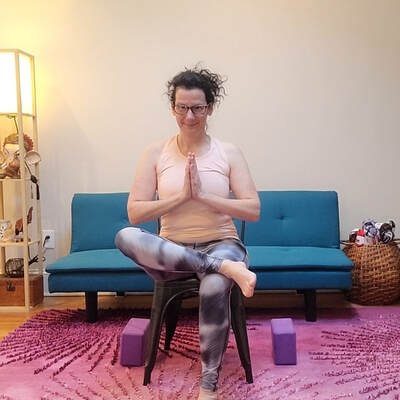
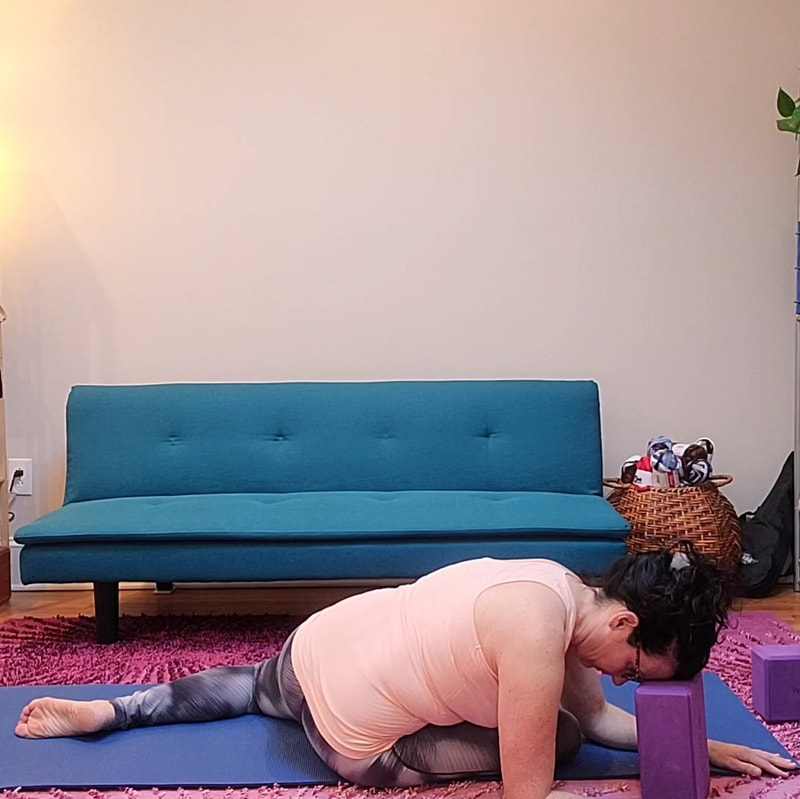
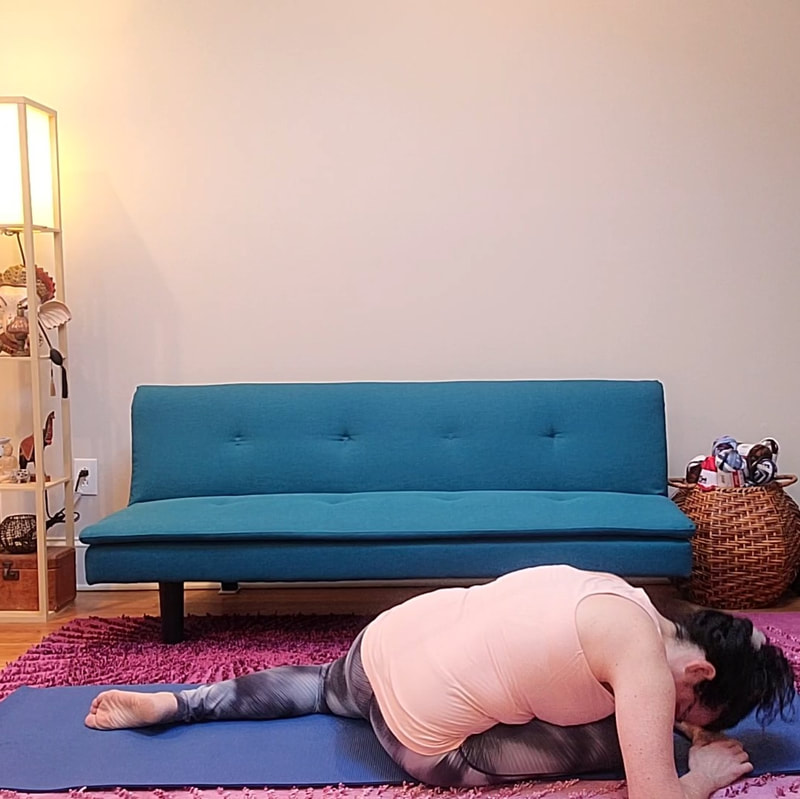
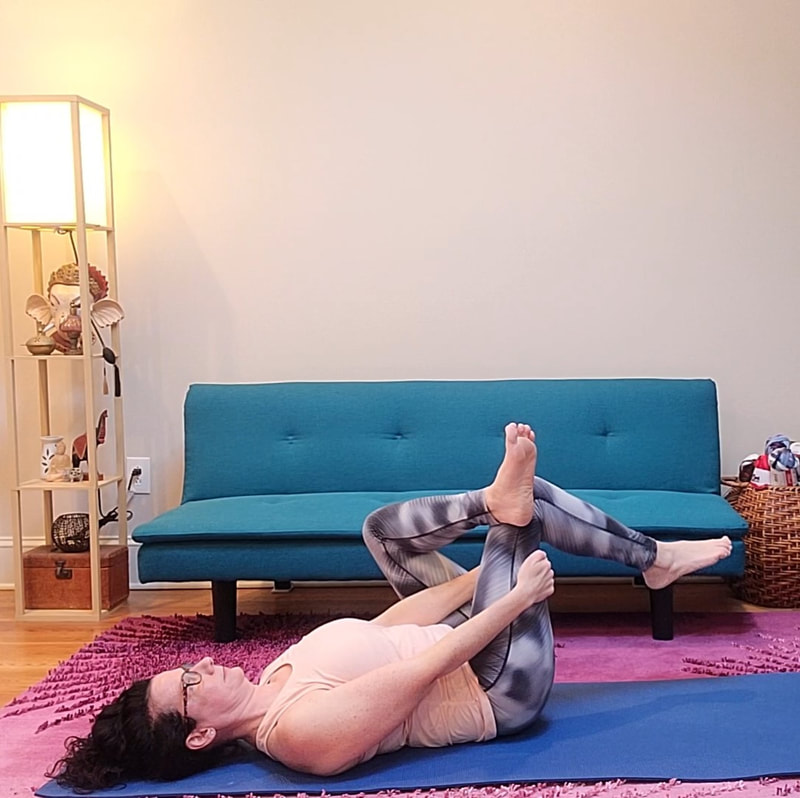
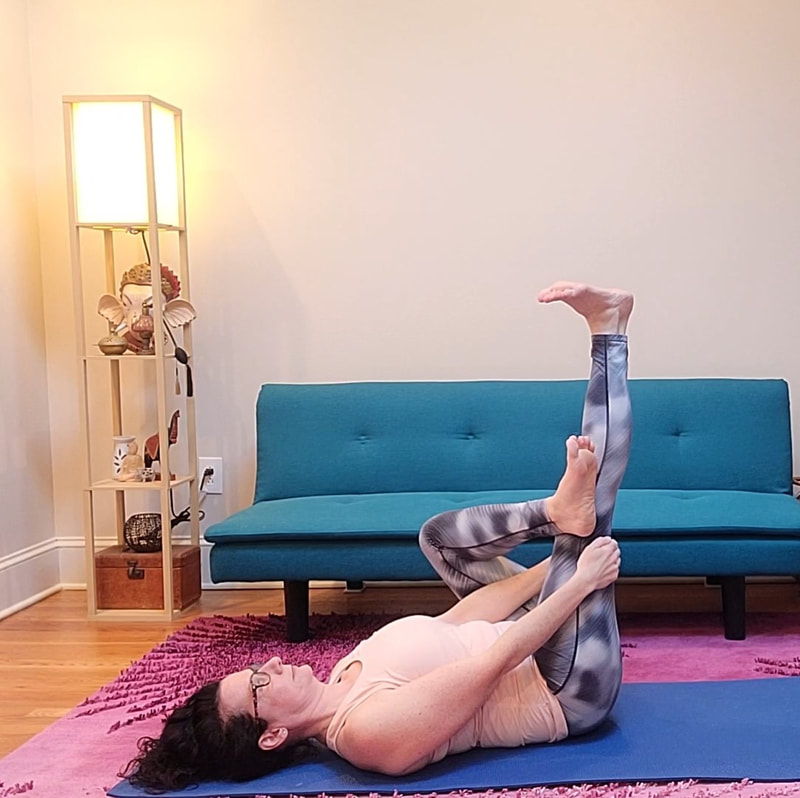
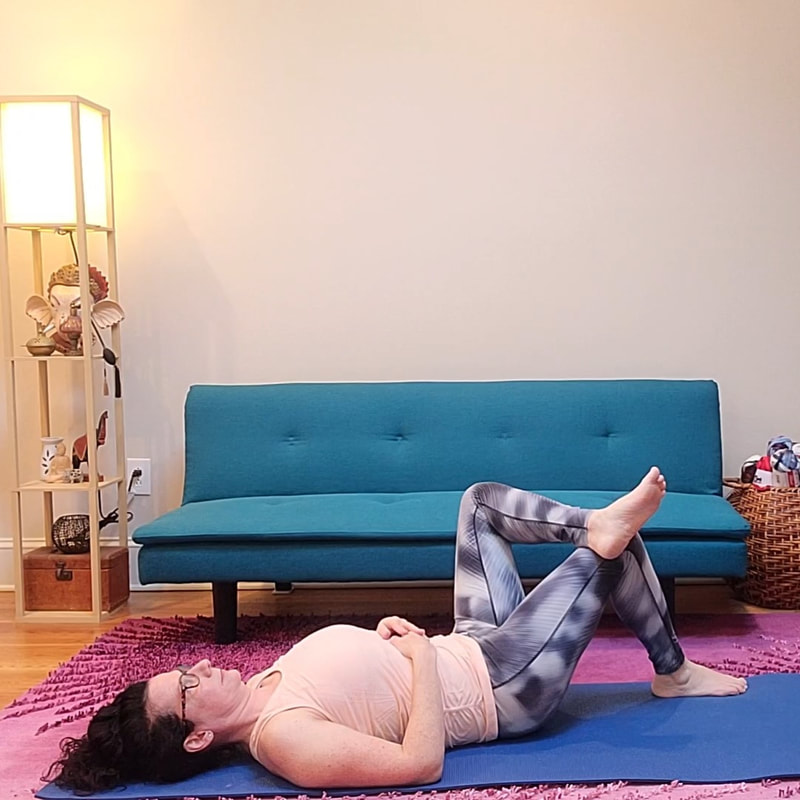
 RSS Feed
RSS Feed
